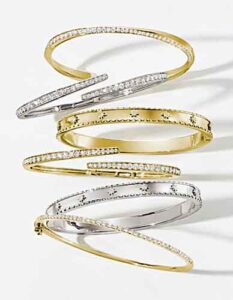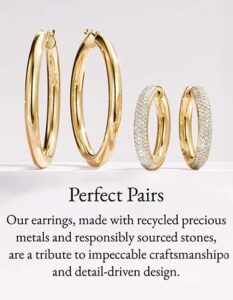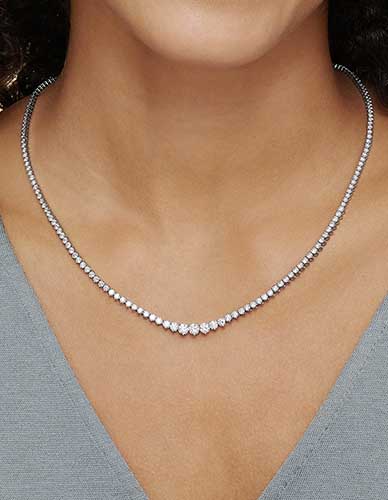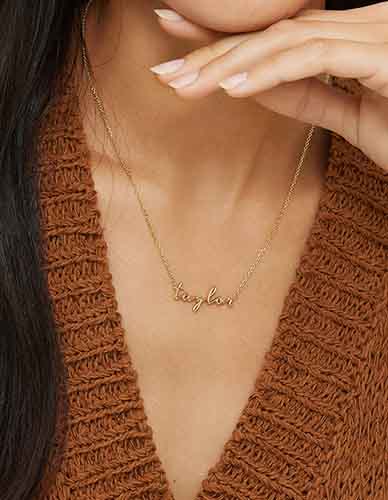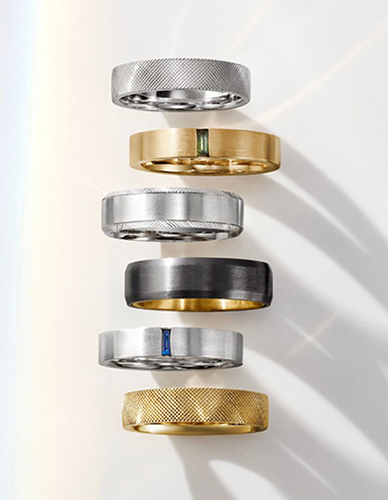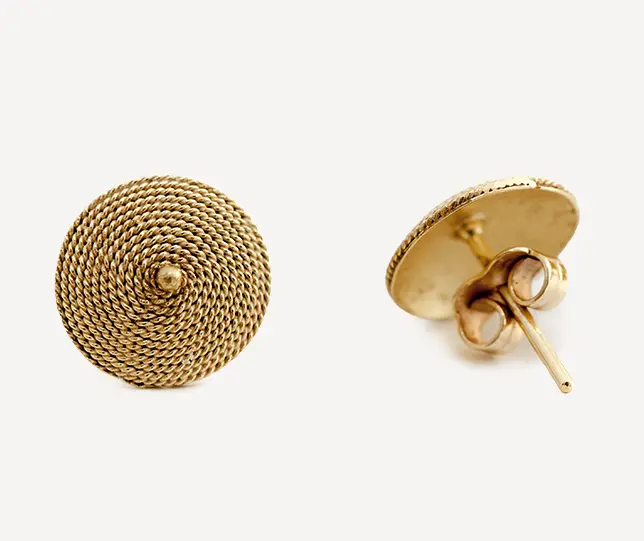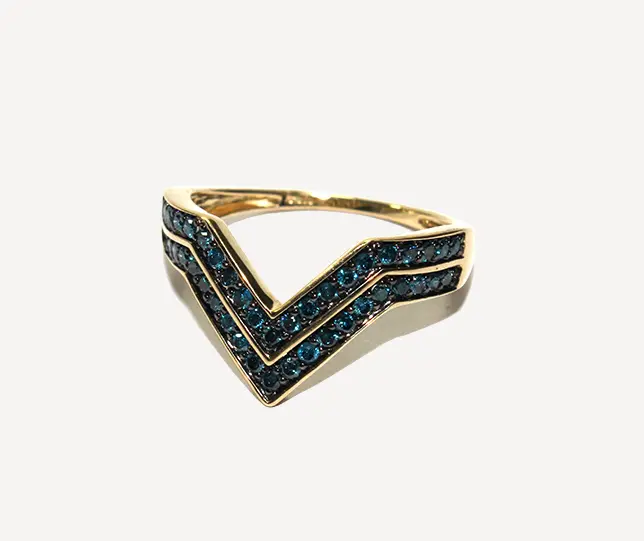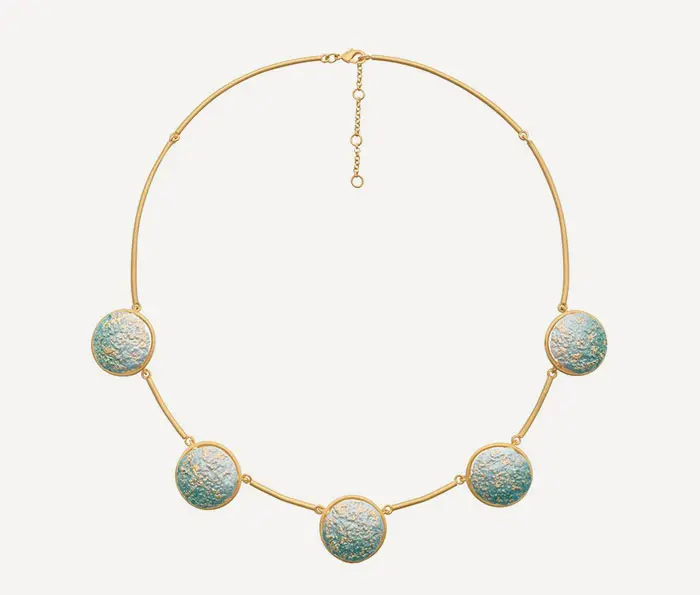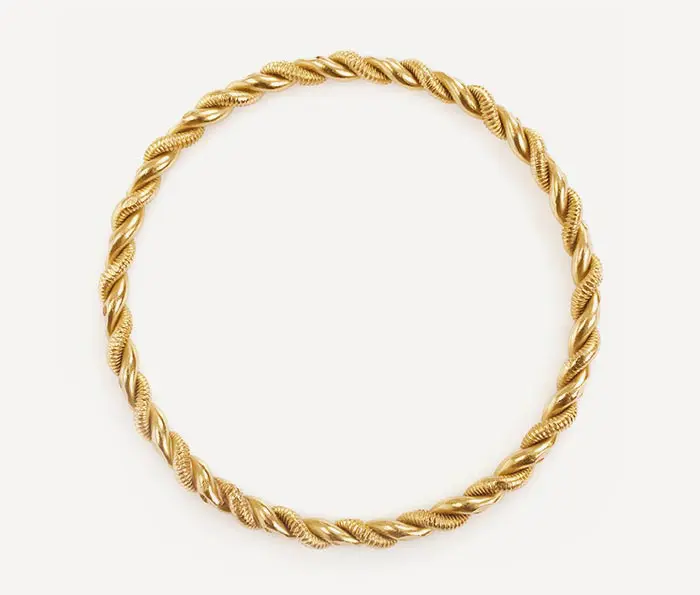Engagement Ring Styles
Learn about the different styles — and settings — of engagement rings to pick the perfect piece.
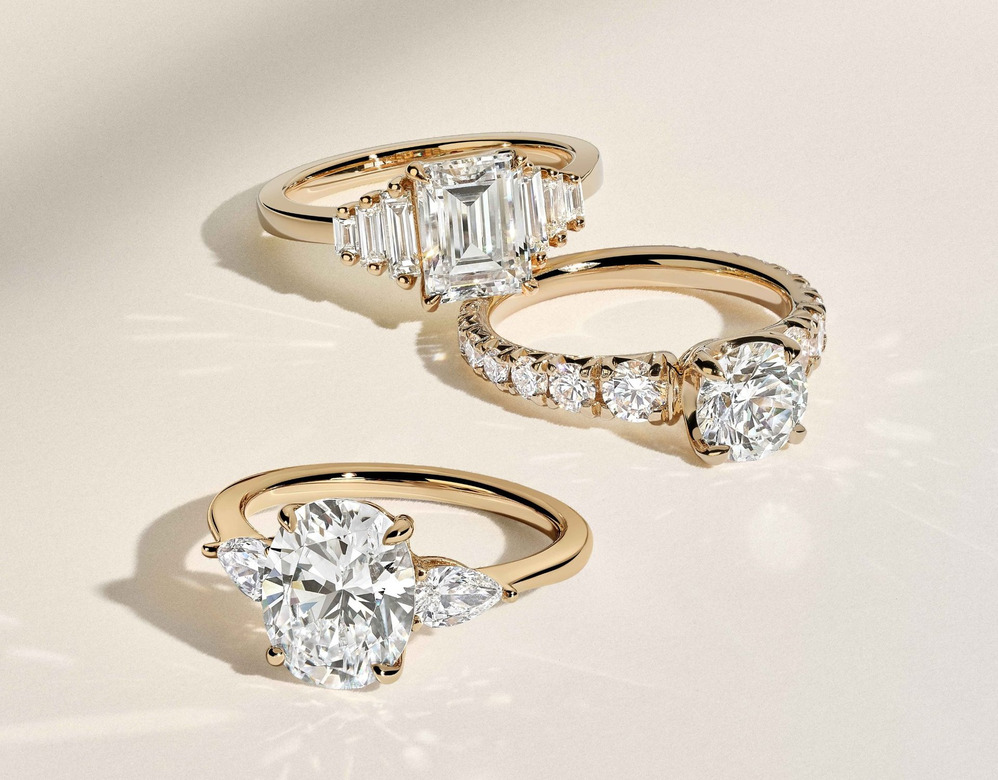
Engagement Ring Styles
Learn about the different styles — and settings — of engagement rings to pick the perfect piece.
Engagement Ring Styles vs. Settings
When picking the perfect engagement ring, it’s essential to understand the terminology of and difference between style and setting. Though it can be difficult to distinguish between the two, style refers to the general look or feeling a ring evokes — be it vintage or nature-inspired, for example. The setting of a ring is more technical, referring to the actual manner in which a center stone is set (bezel or prong-set) and what kind of accents it features — or lack thereof (solitaires). To dive into the distinctive details between style vs. setting, read on.
Engagement Ring Styles
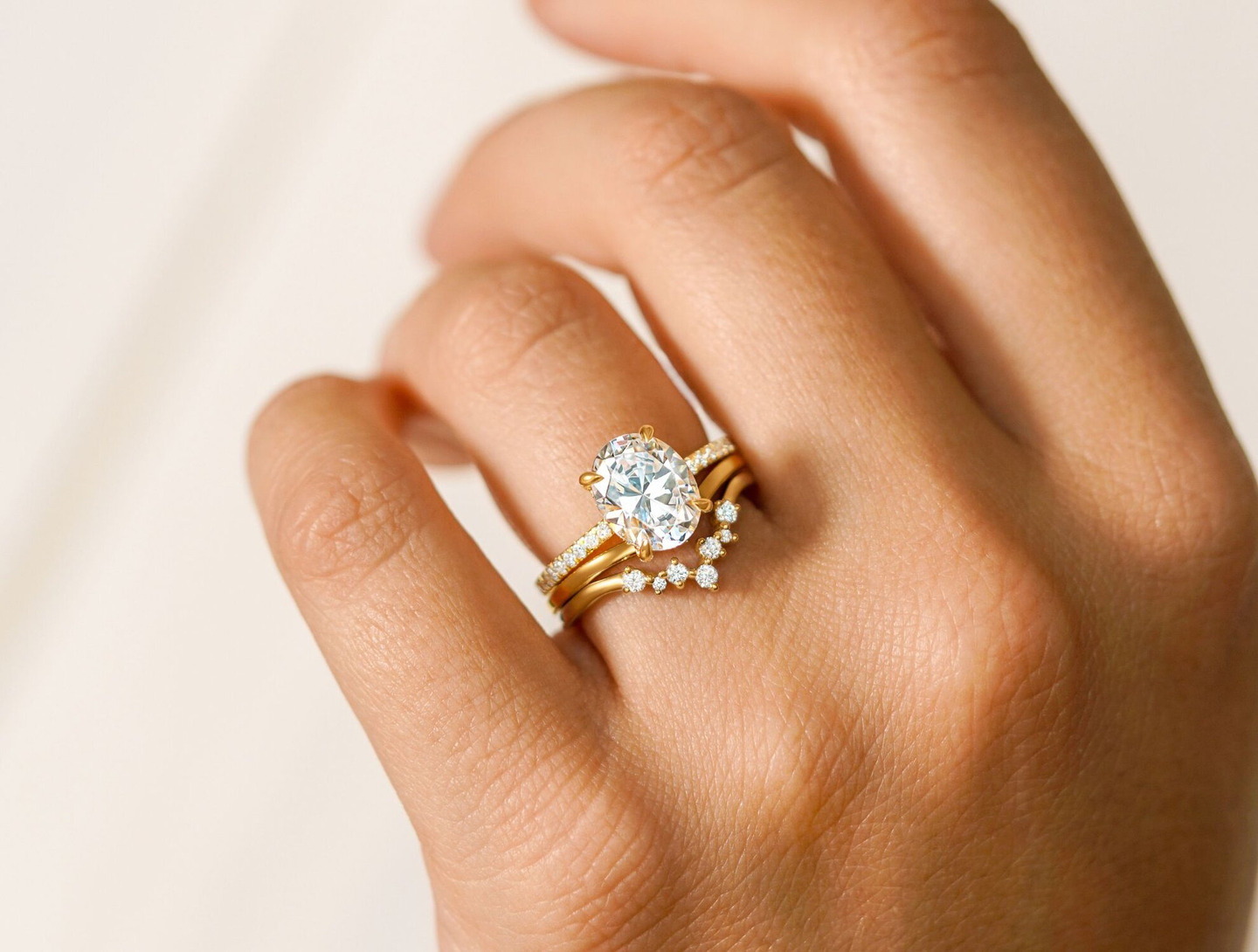
Classic
Classic engagement rings feature timeless design motifs like clean lines, solitaire settings, and dainty pavé accents. Elegant and subtly sophisticated, these styles tend to be timeless looks that never go out of style, making them both the perfect choice for the piece of jewelry you’ll wear forever and excellent future heirlooms.
Luxe
Luxe engagement rings all have one thing in common: no shortage of diamonds. Whether it’s a more traditional diamond setting in a high carat count or a sculptural style adorned with hundreds of tiny shimmering stones, these rings are always big, bold, and eye-catching.
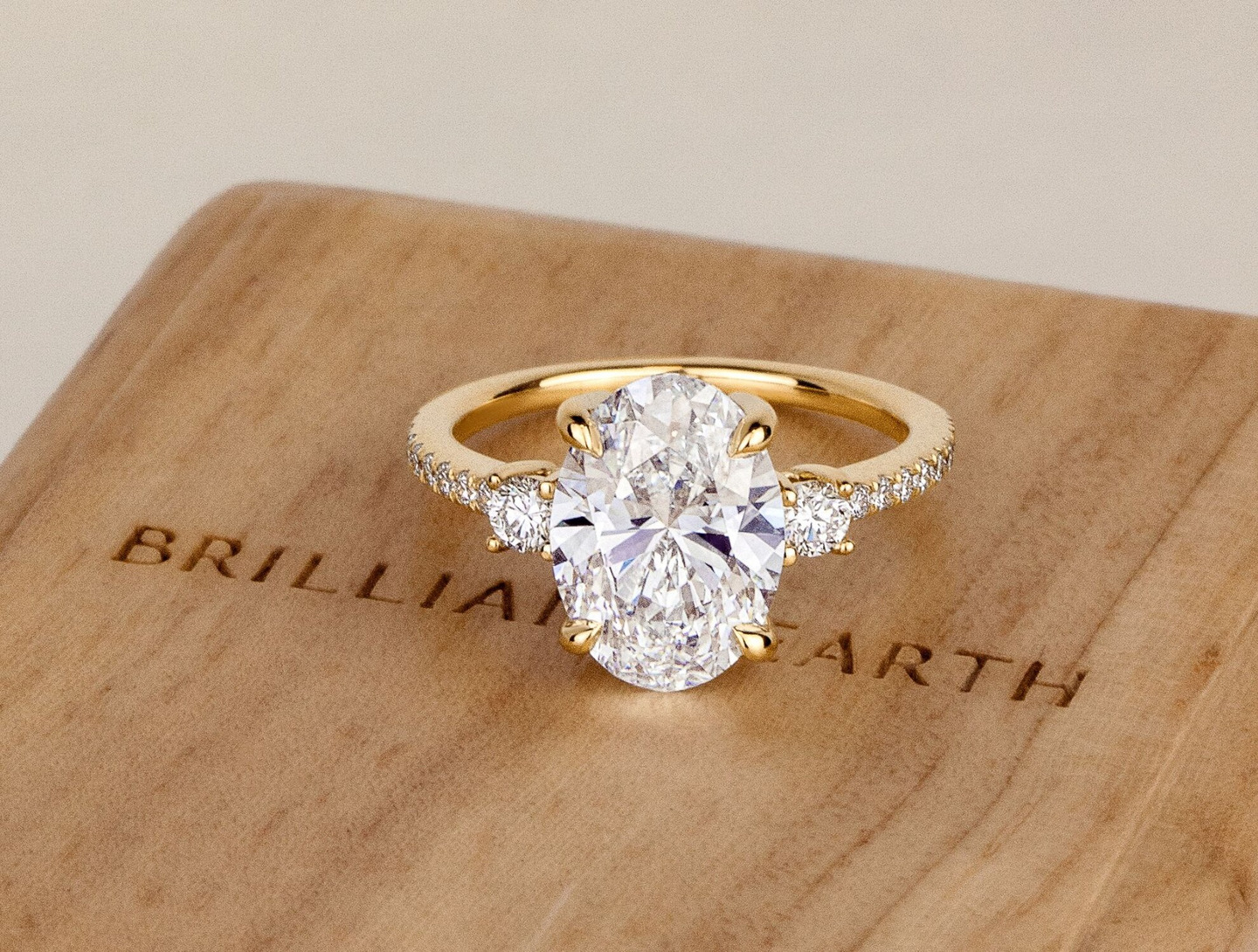
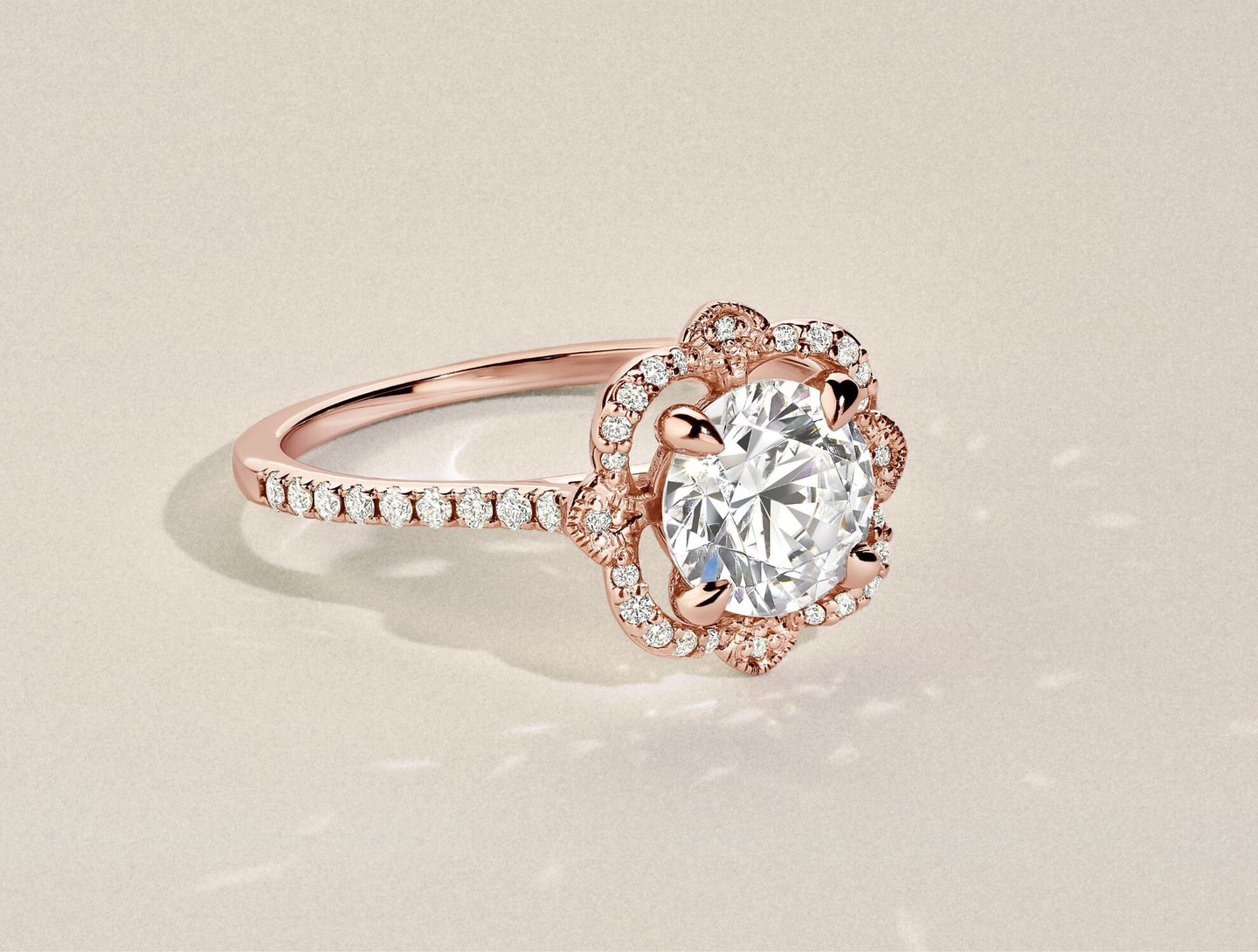
Vintage Inspired
Vintage-inspired engagement rings borrow from the romance of the past by featuring elements such as milgrain details, hand-carved filigree, or three-stone settings that symbolize the past, present, and future. Intricate details, such as step-cut diamond accents, distinguish these designs from modern or contemporary styles with more simplistic, sleek lines.
Nature-inspired engagement rings bring on the bloom with design motifs such as floral patterns, diamond petals, organically shaped clusters, and twisting vines of precious metal. These styles can be solitaires or accented with diamonds or other gemstones (such as green sapphires that evoke leaves).
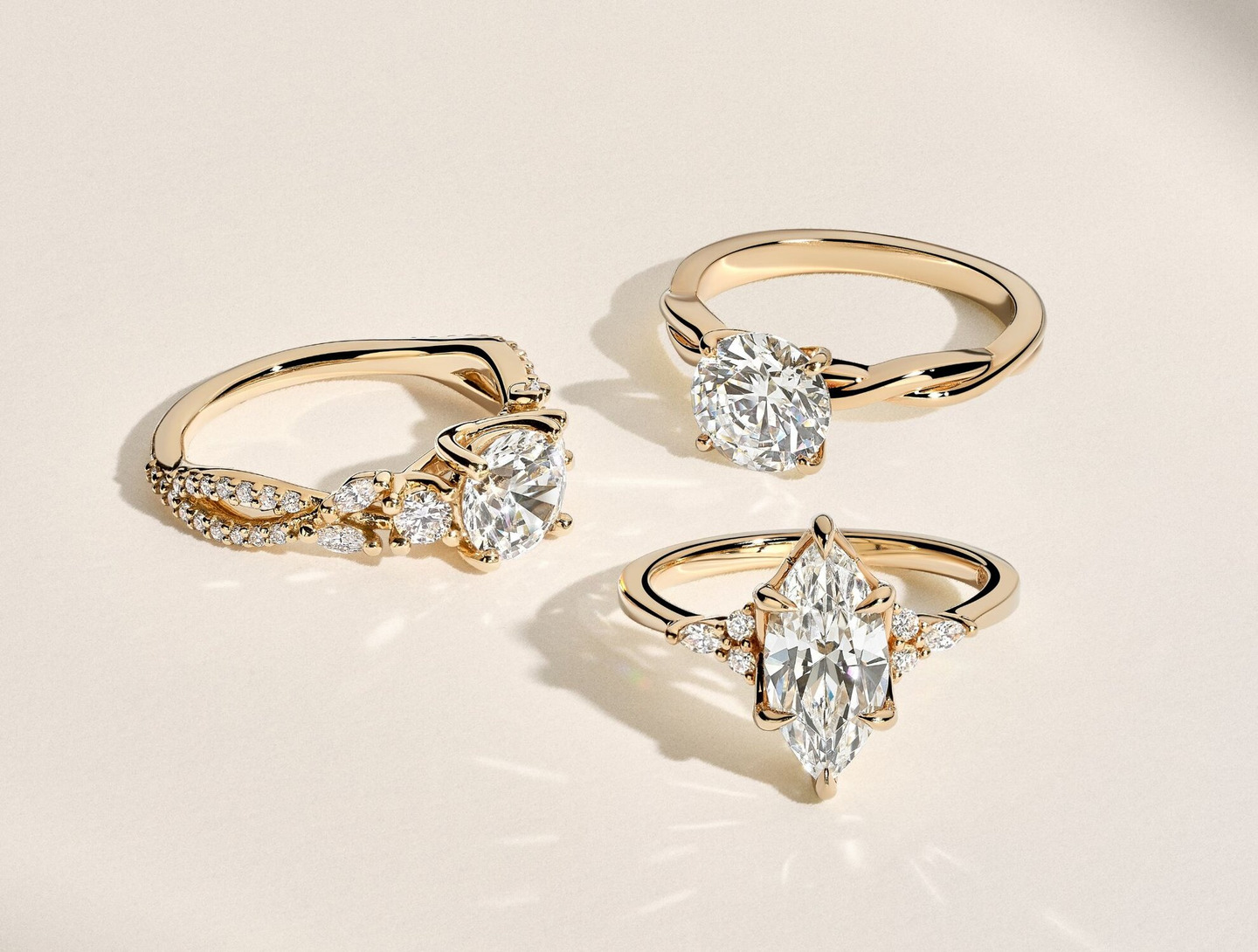
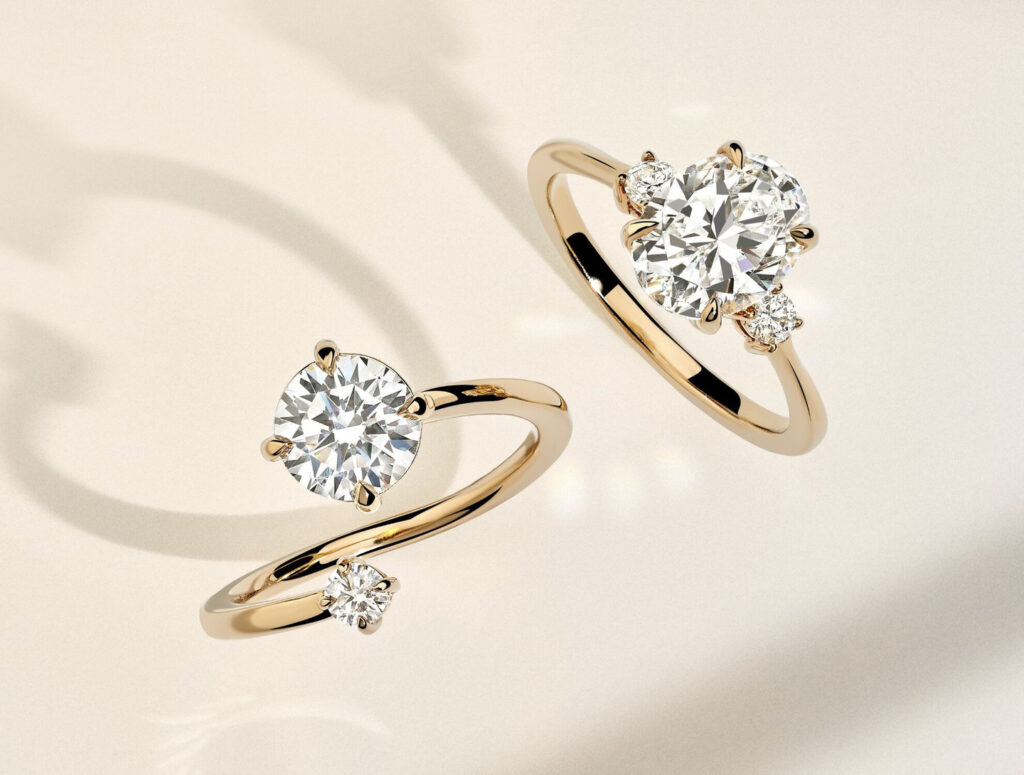
Modern
Modern engagement rings are all about bold, sleek silhouettes or sculptural details, such as wide widths, gently tapering bands, or a multi-prong style that adds a textural element. Split shank rings are an excellent example of a modern look that makes an impact with a simple, streamlined style.
Nontraditional
Nontraditional engagement rings break with convention with design features like thick bands or completely unique silhouettes. Often, they can be gender neutral — providing anyone and everyone with a look that works for their personal style.
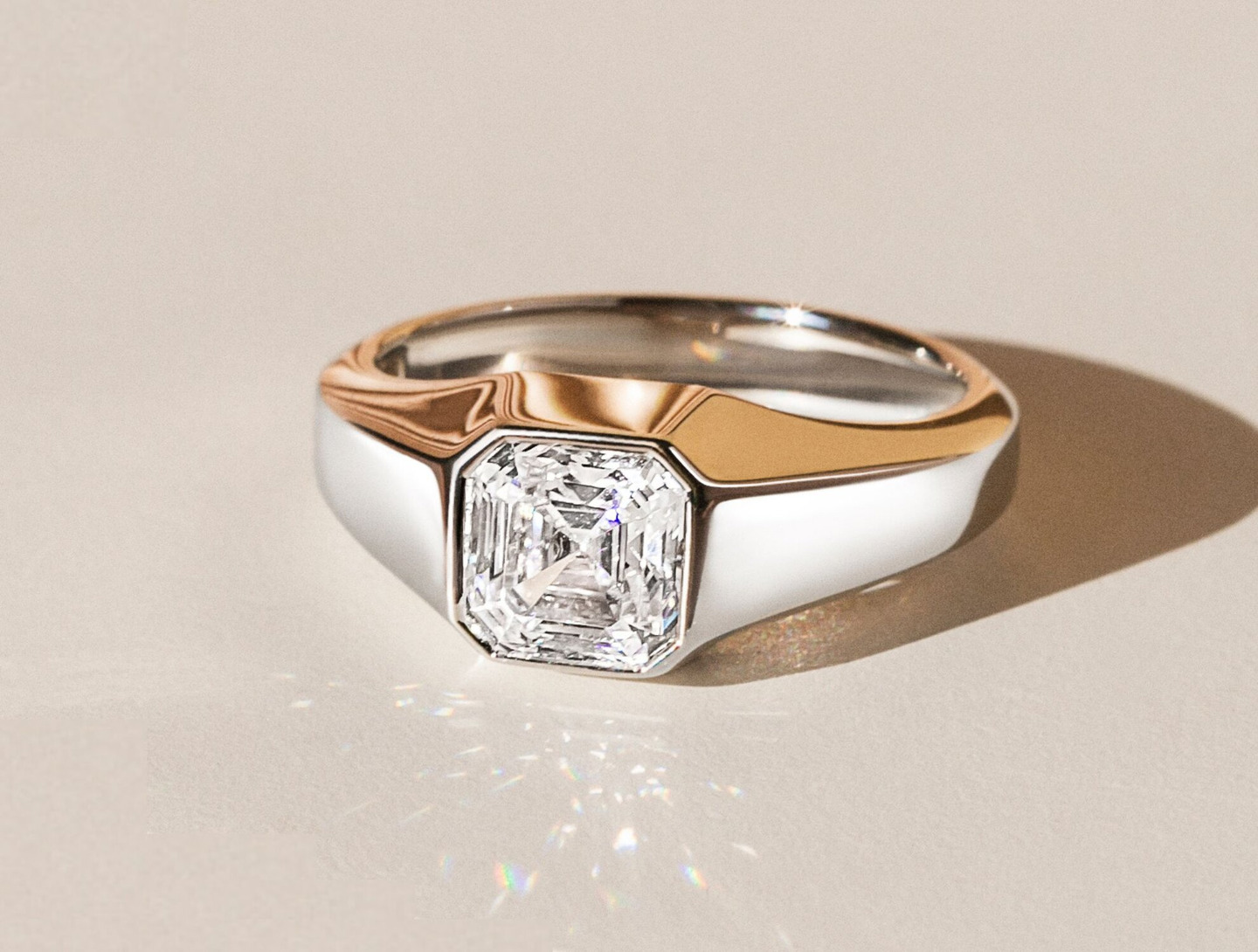
Popular Engagement Rings
Discover our most popular engagement ring settings.
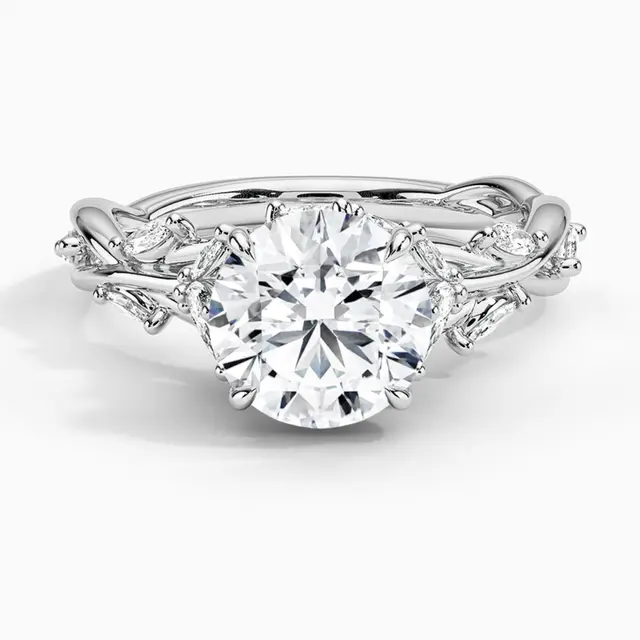
Secret Garden
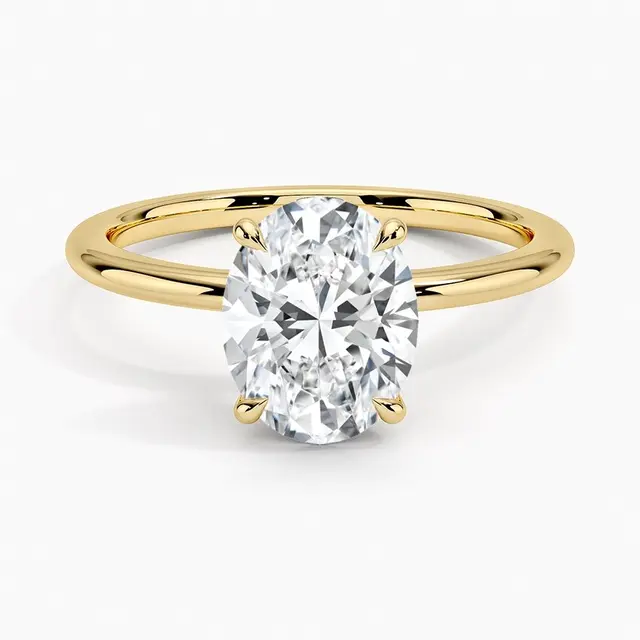
Petite Elodie Solitaire
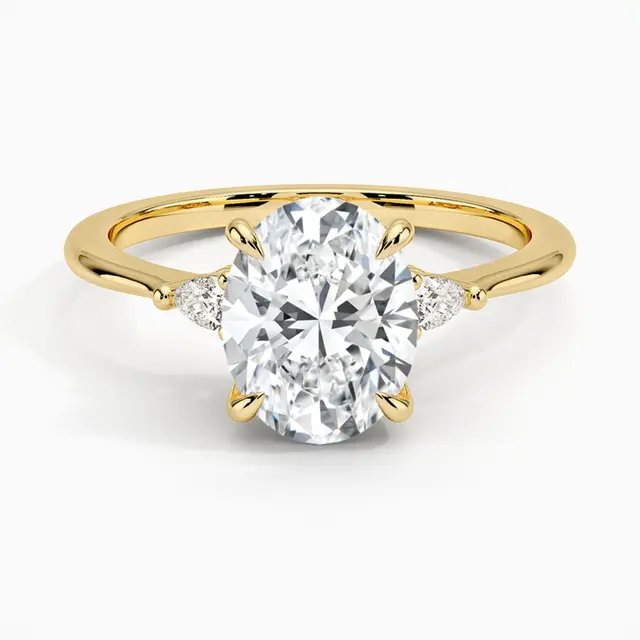
Aria Three Stone
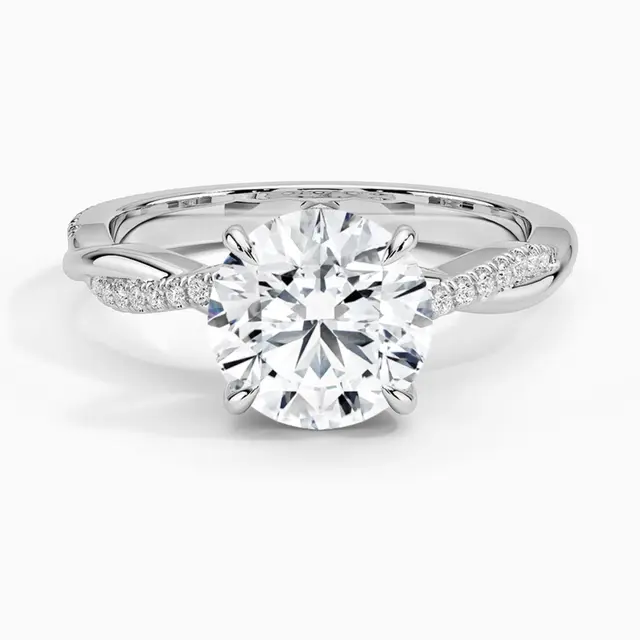
Petite Twisted Vine
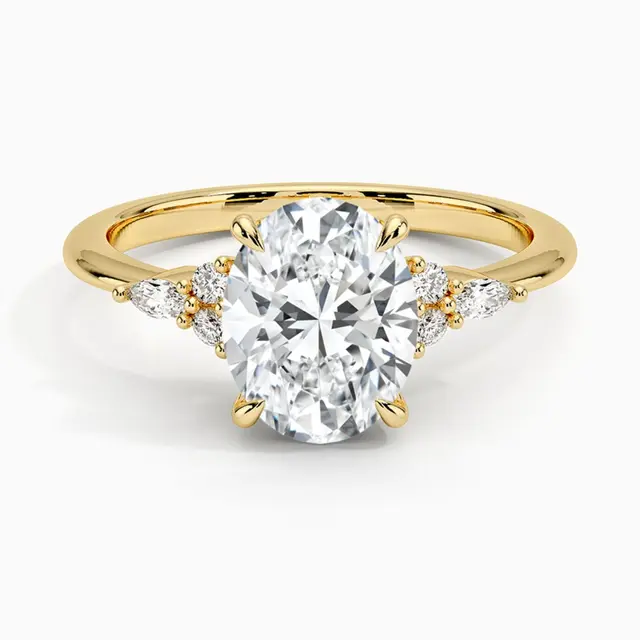
Nadia
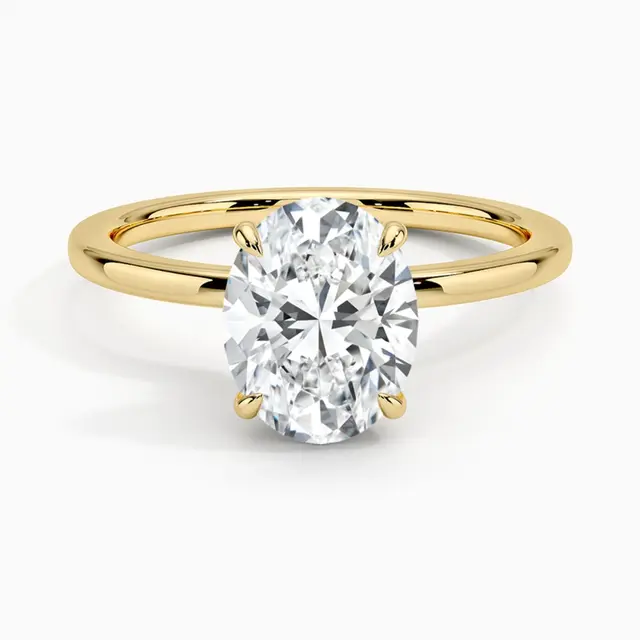
Secret Halo
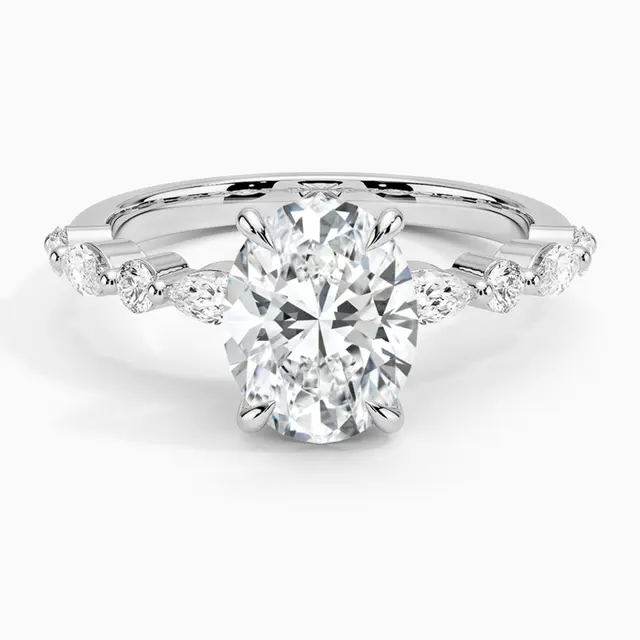
Versailles
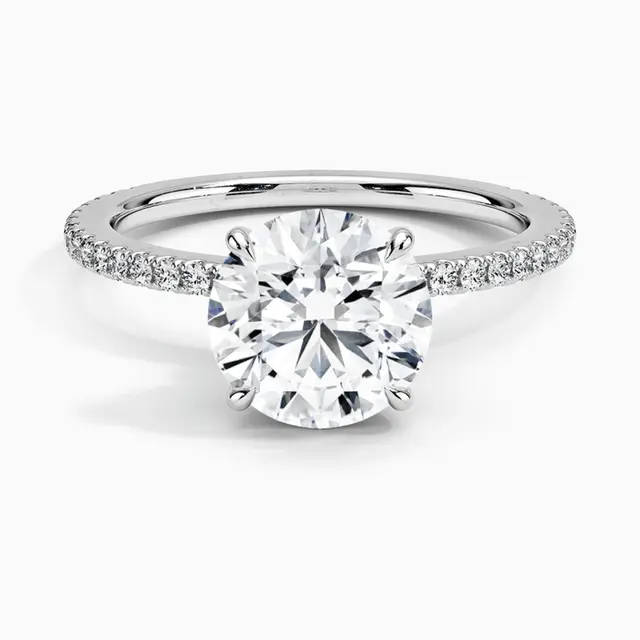
Demi
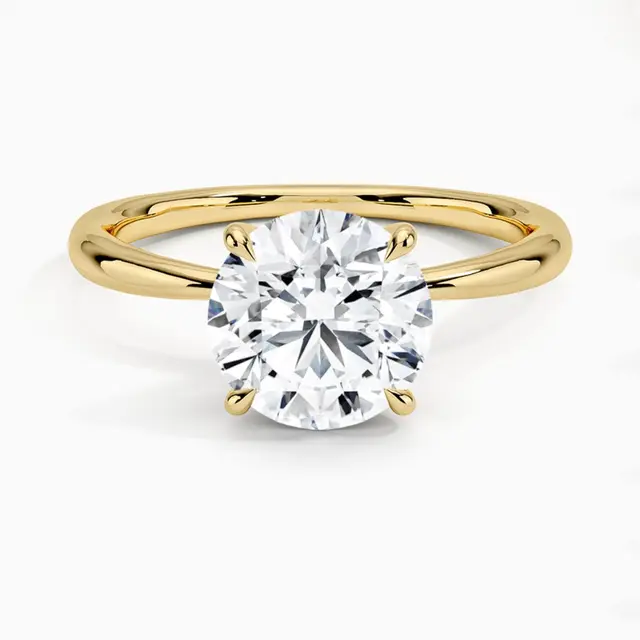
Freesia Solitaire
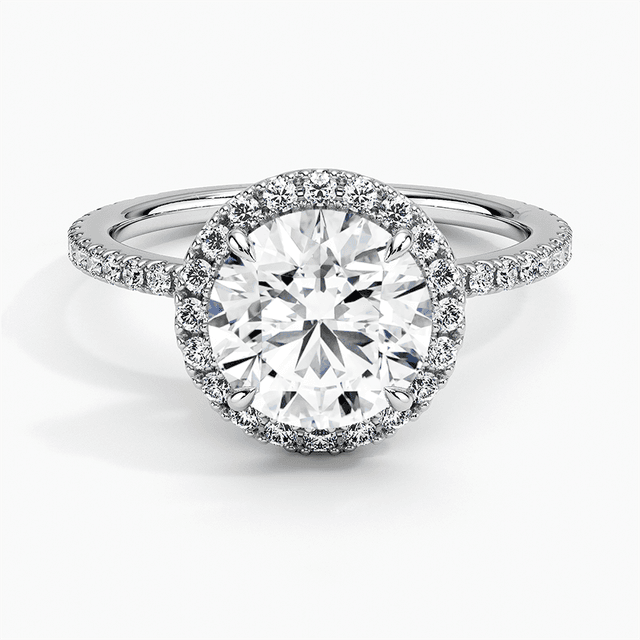
Waverly Halo
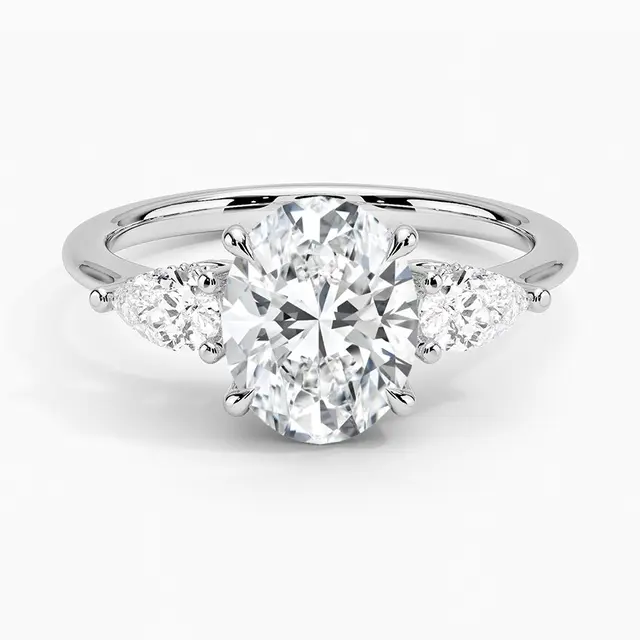
Adorned Opera Three Stone
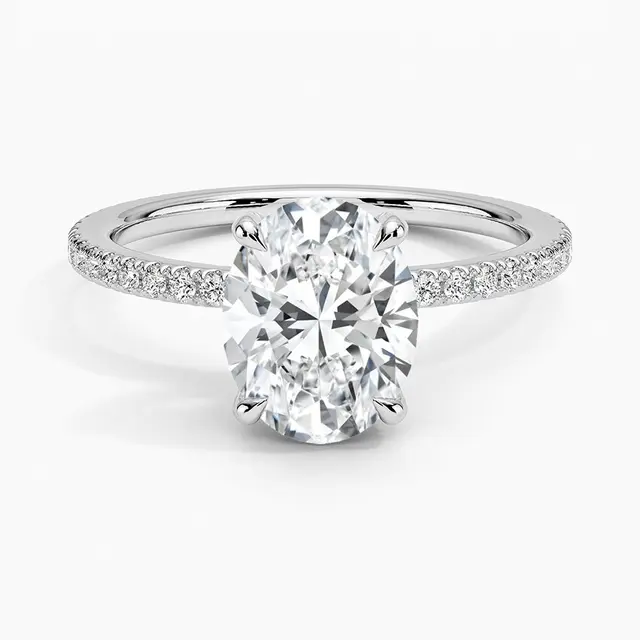
Luxe Viviana
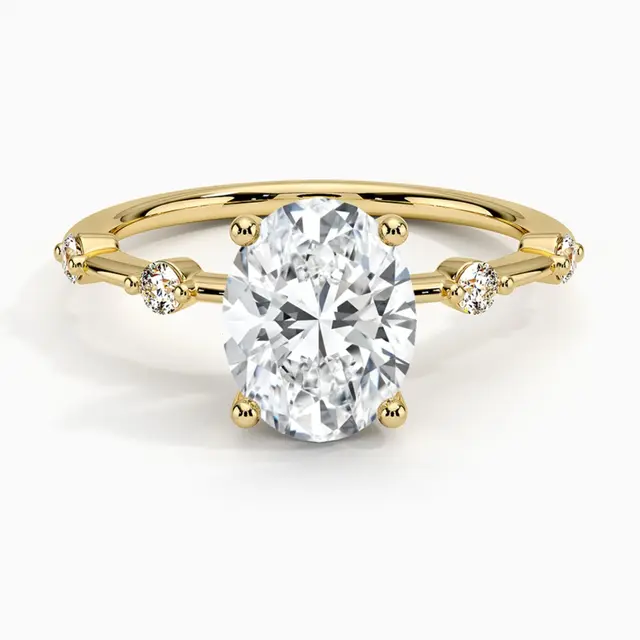
Aimee
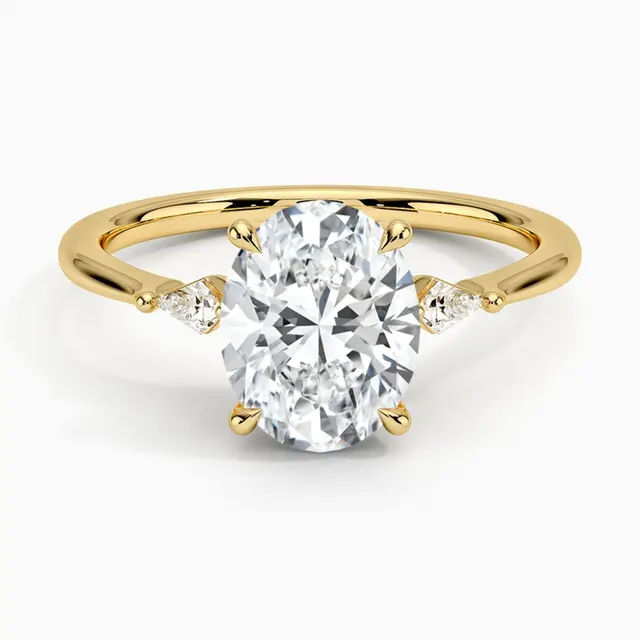
Petite Cometa Three Stone
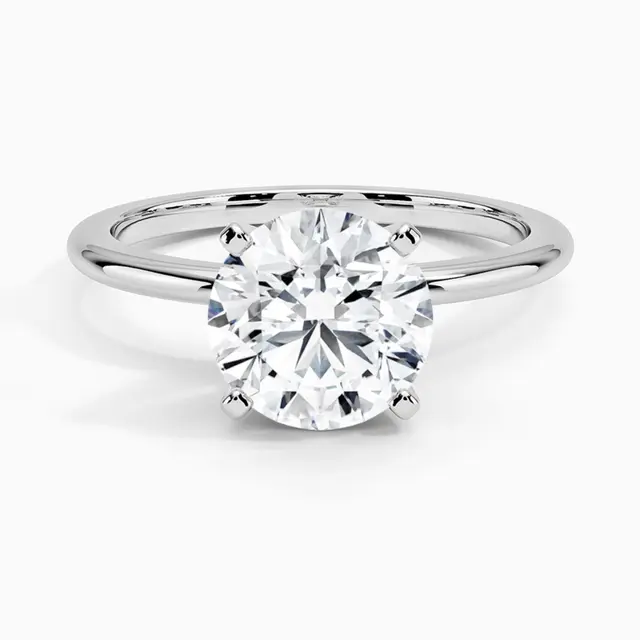
Four Prong Petite Comfort Fit
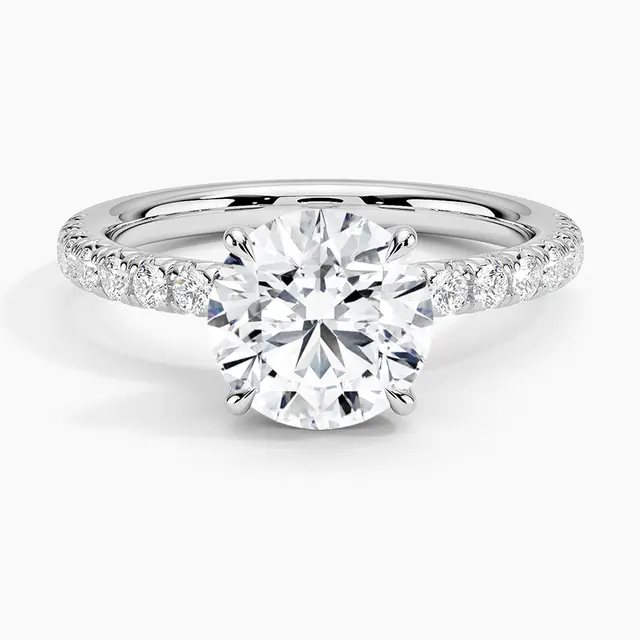
Amelie
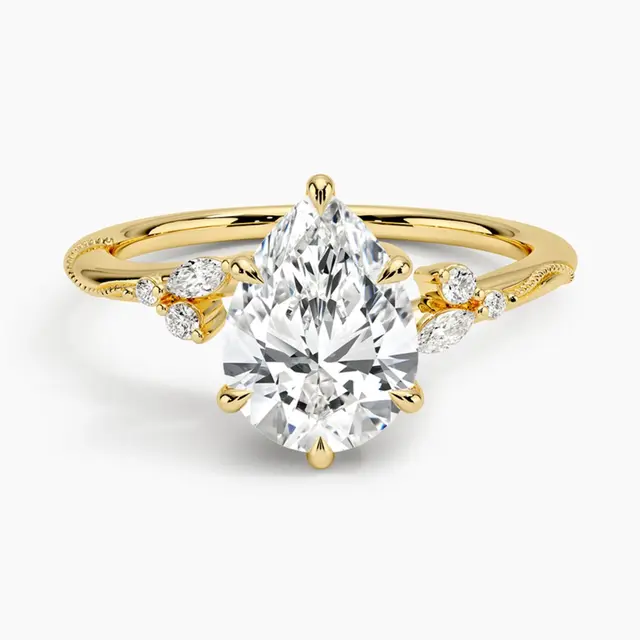
Camellia Milgrain
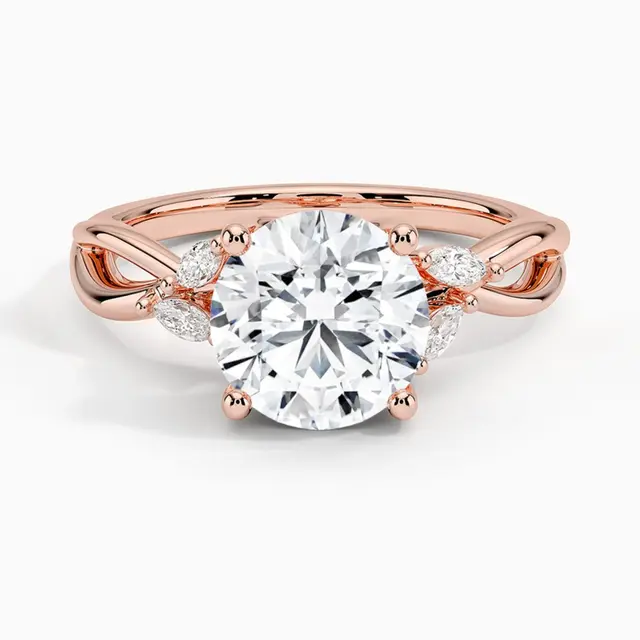
Willow
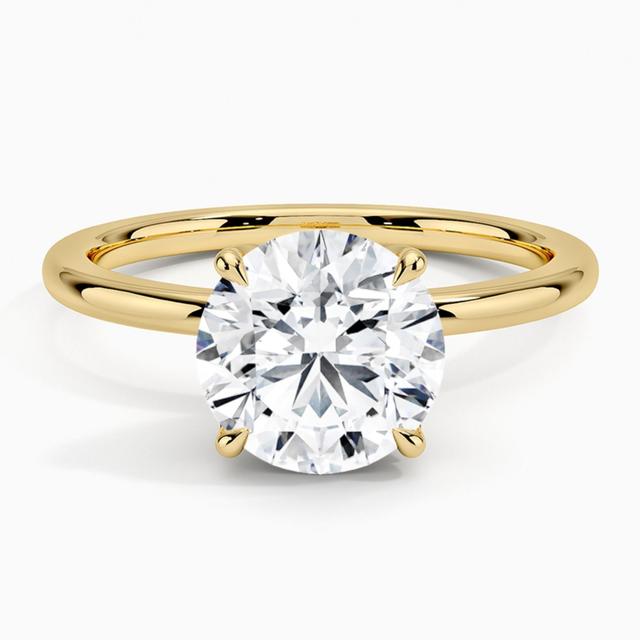
Petal
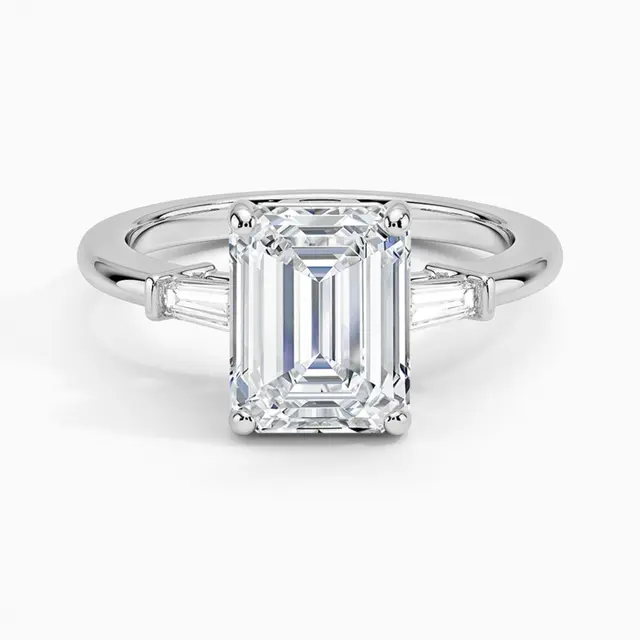
Tapered Baguette Three Stone
Types of Engagement Ring Settings
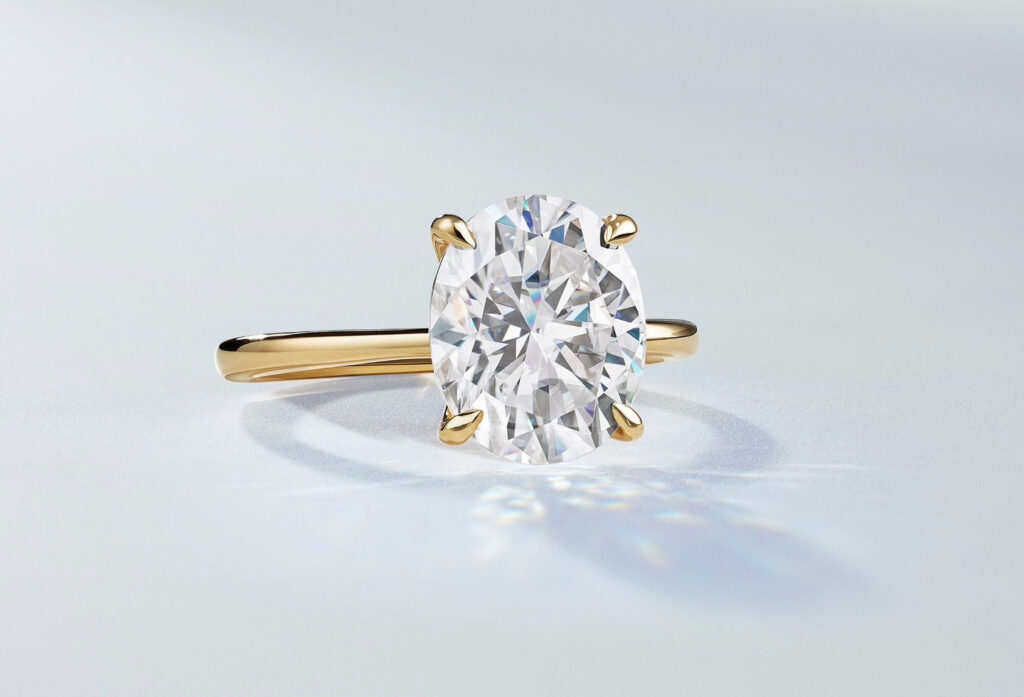
Solitaire
Solitaires are timeless classics. Derived from the Latin “solitarius,” meaning alone or isolated, solitaires feature a single center stone with no additional diamond accents along the band. They can feature distinct design motifs, such as a split shank, textural element, or thick band width. In their most classic form (a simple, thin band with four to six prongs supporting the center stone), solitaires are the archetypal engagement ring and the most popular of all time.
Halo
Halo engagement rings feature shimmering accents surrounding the center gemstone. These accents are traditionally diamonds but can be other gemstones such as sapphire, emerald, or ruby. These “angelic” styles are beloved for their added sparkle — they also have the unique ability to enhance the appearance of the center stone. Halo designs come in many forms, such as a round, square, or even floral silhouette. They can feature further accents along the band or a plain band.
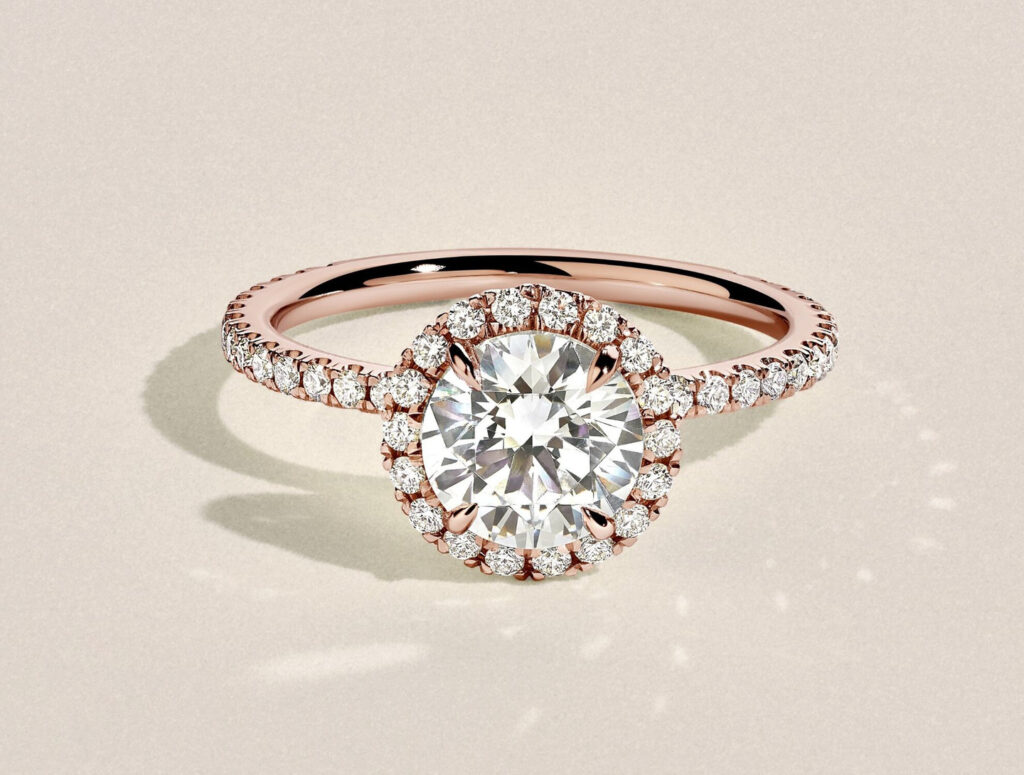
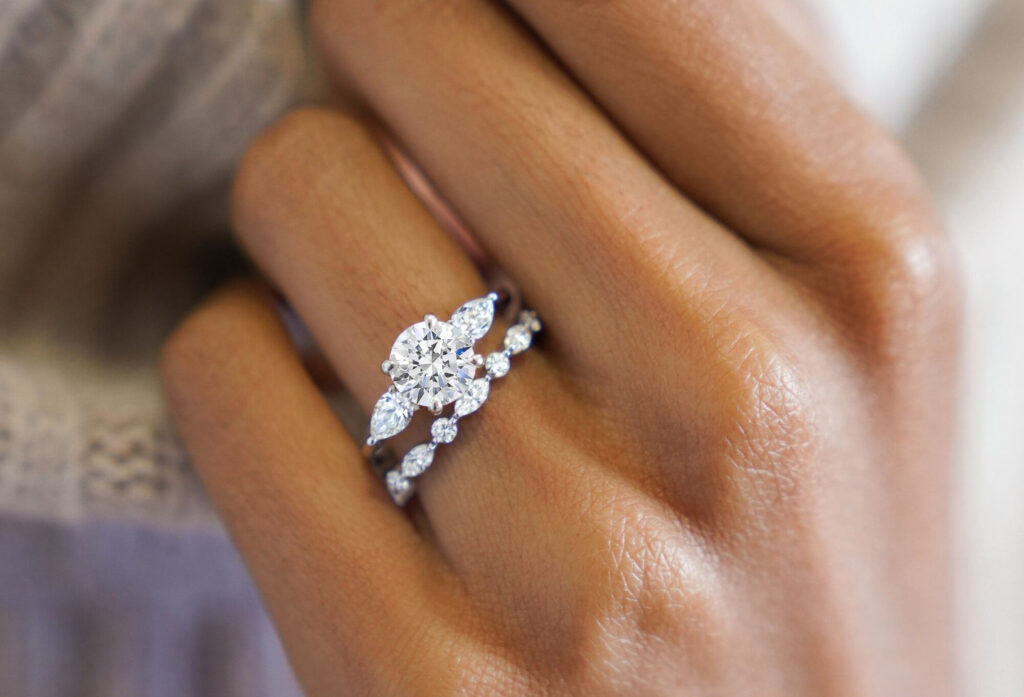
Three Stone
Three-stone engagement rings feature two large diamond accents along either side of the center stone. Together, they symbolize the past, present, and future. Historically, the accents are round but can come in various shapes, from baguette-cut to kite-shaped. While some three-stone engagement rings are traditional and sleek, others are more luxe: think of extra accents along the band or a hidden halo.
Pavé
Pavé engagement rings are diamond-accented styles set in a particular fashion. From the French word for “paved,” pavé rings are paved with small, melee diamonds set along a band. This setting style, with prongs that only ever so slightly wrap atop the diamond, allows for maximum, endless sparkle, making pavé a top choice for jewelers and customers alike.
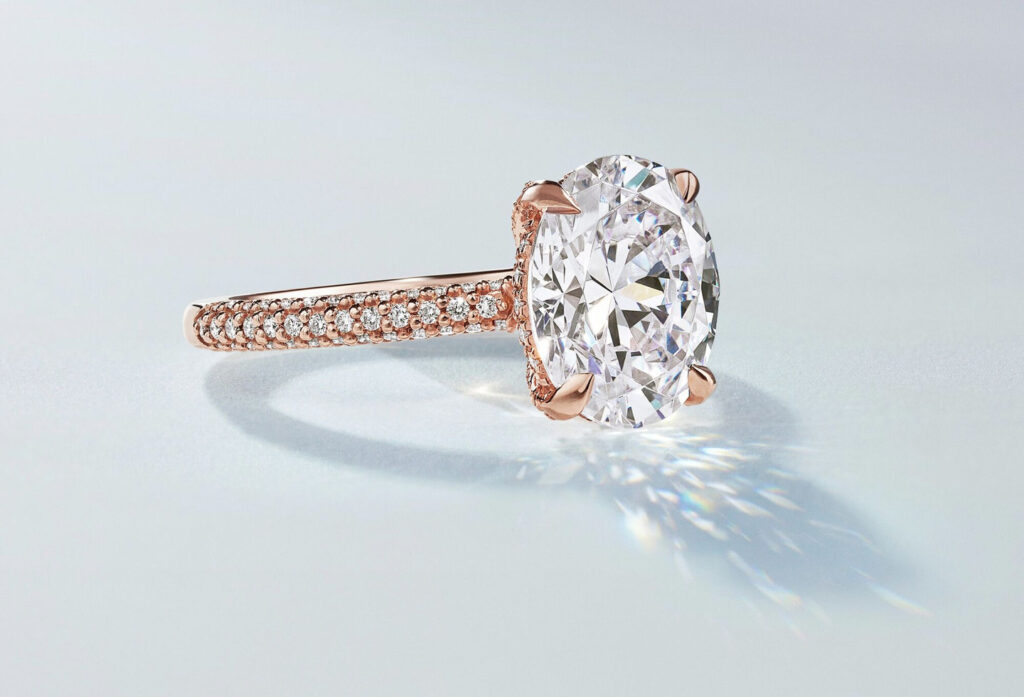
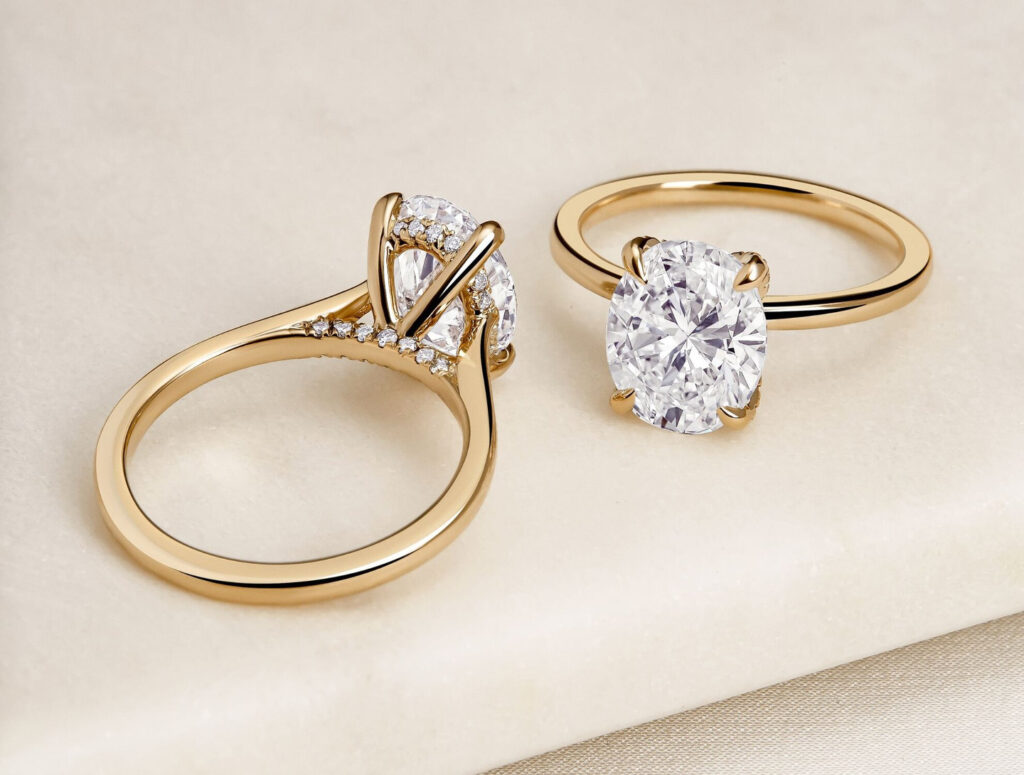
Hidden Accent
Hidden accent engagement rings are all about surprise. What might look like a solitaire from the top down may be much more than meets the eye: secret diamonds (or other gemstones) may be hiding in a hidden halo beneath the center stone or along the inner edge of the band. Hidden halos can feature regular halos and accents along the band as long as there is an element of surprise sparkle.
Bezel
Bezel engagement rings feature a precious metal border around the center stone that sets and secures it. This type of setting accentuates the center diamond or gemstone, giving it a sleek, contemporary look. Bezel-set rings can be solitaires, feature a vintage-inspired motif, or feature sparkling accents: it all depends on the preference of the wearer.
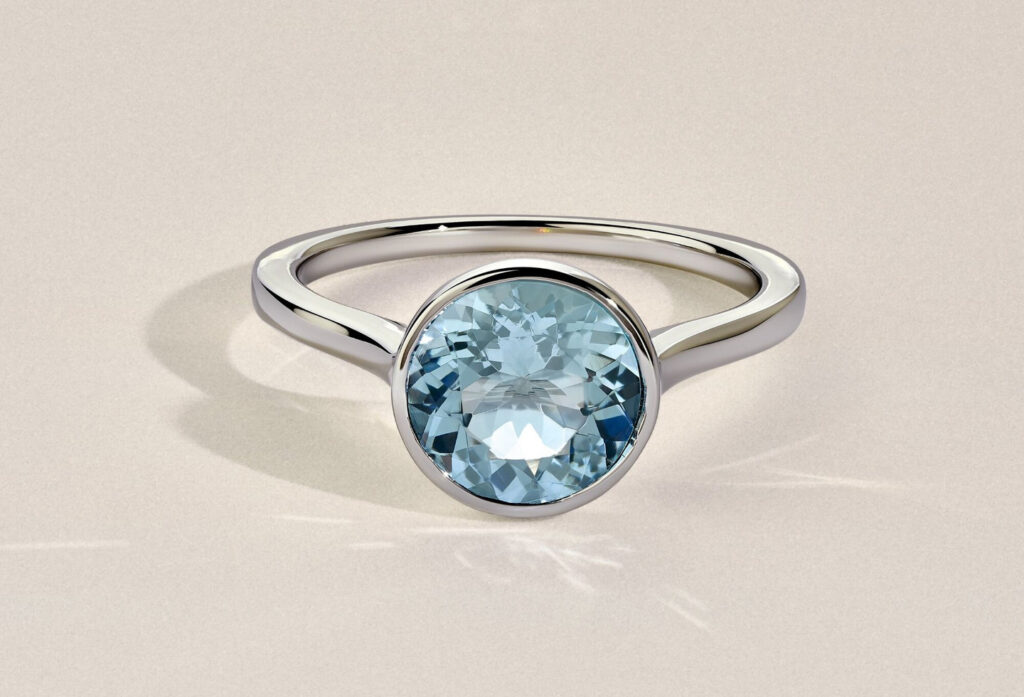
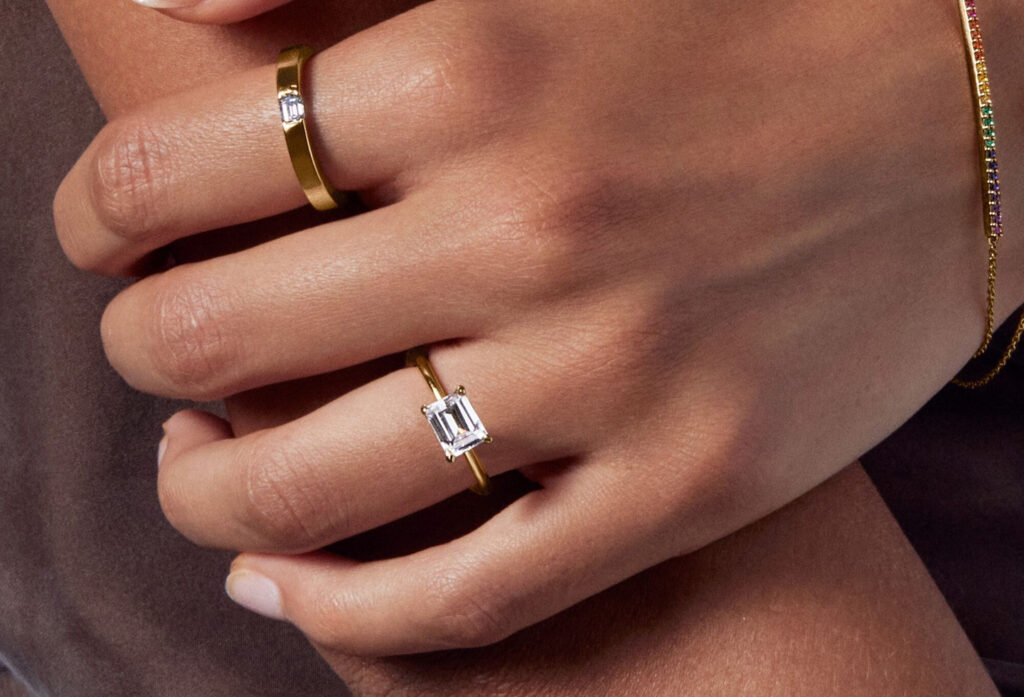
East-West
East-west settings feature an elongated center stone set horizontally rather than in the traditional vertical style. For example, in a non-east-west setting, an emerald-shaped diamond features its long side facing upwards, but in an east-west setting, the center stone is flipped 90 degrees to rest horizontally along the finger. These styles are increasingly popular for their contemporary, unique look, whether set in a solitaire setting or with extra accents.
Split Shank
Split shank engagement rings feature a band that splits into two or more strands as it reaches the center stone. This creates an open, sculptural look that can accentuate the look of the center stone. Split shank designs can be solitaires or adorned with engravings or accents, but they all feature a single, double, or even triple split shank design.
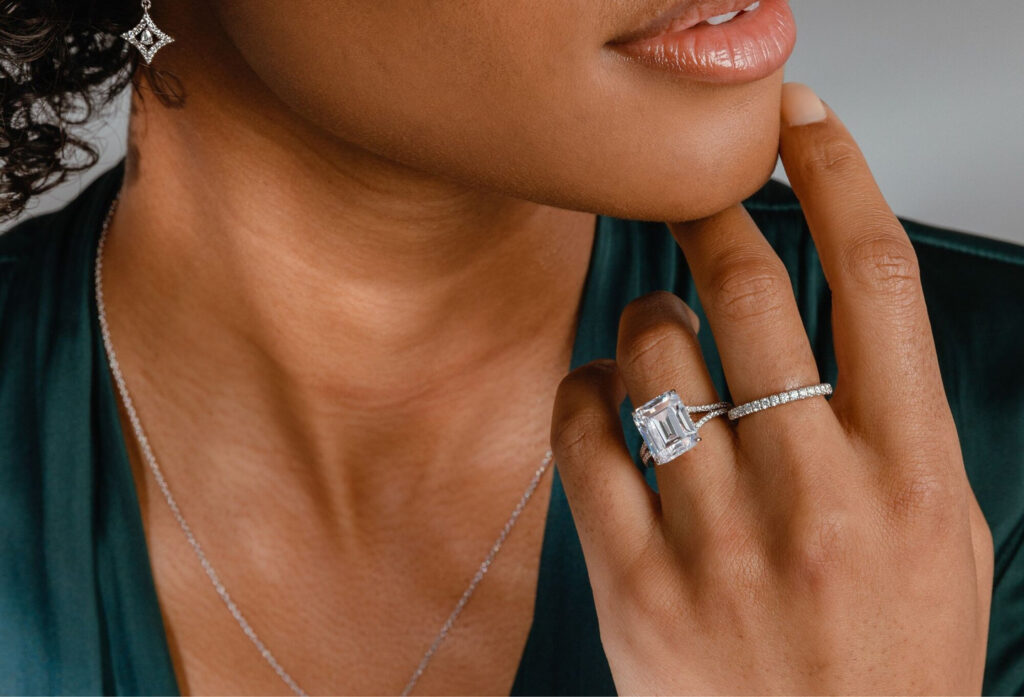
Engagement Ring Setting Design Details
When selecting an engagement ring, it’s important to understand what features to consider. From prong type to shank finish, learn all the details of engagement ring settings to pick the perfect piece.
Prong Type
Prongs refer to the metal that secures the center gemstone atop the setting. They are an essential feature in the overall look of a ring and a critical feature in ensuring your center stone stays put.
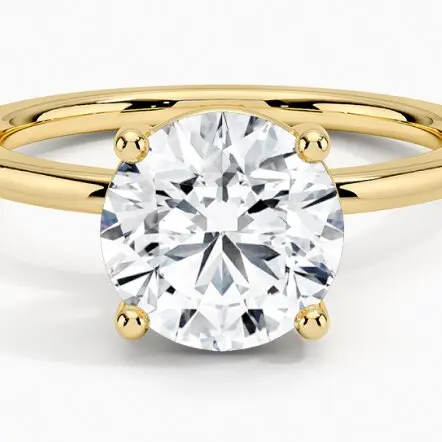
Bead
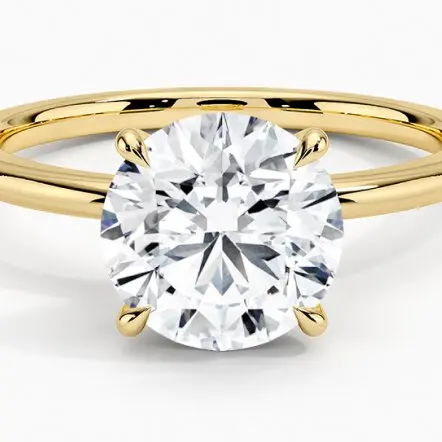
Claw
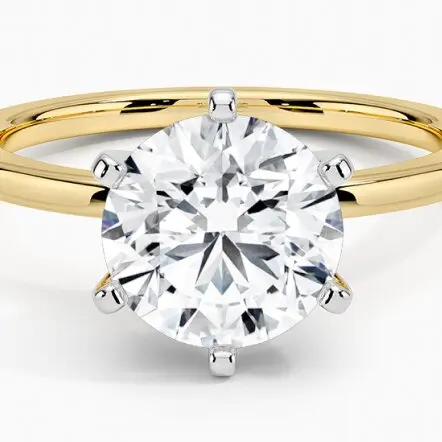
Six Prong
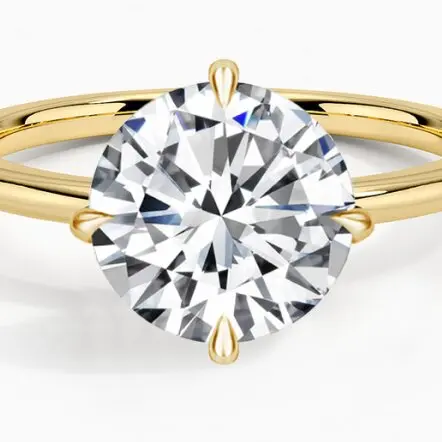
Compass
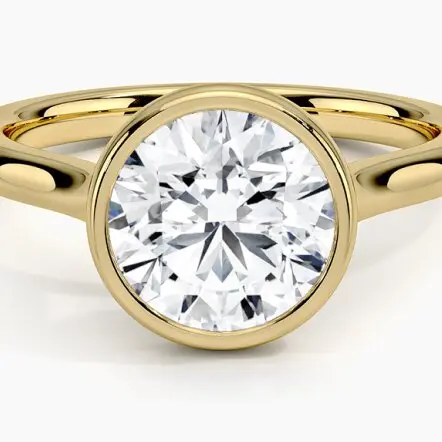
Bezel
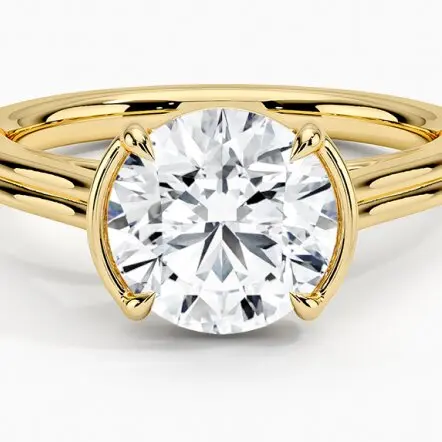
Semi Bezel
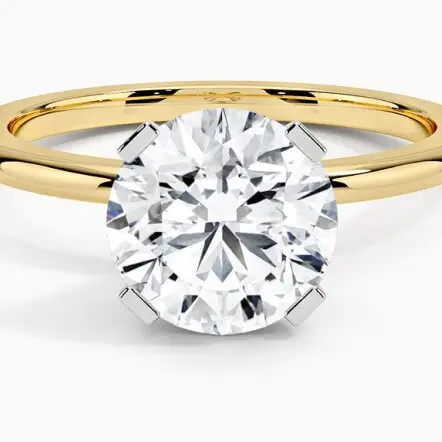
Paddle Prong
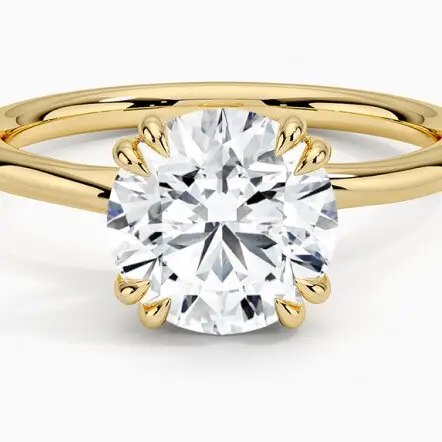
Multi Prong
Center Gemstone Setting
The center gemstone setting, commonly referred to as the ‘head’ in ring anatomy, is the metal that connects the prongs to the shank of the design, keeping the center stone in place. Beyond security, the center gemstone setting determines how high or low your ring will sit on your finger.
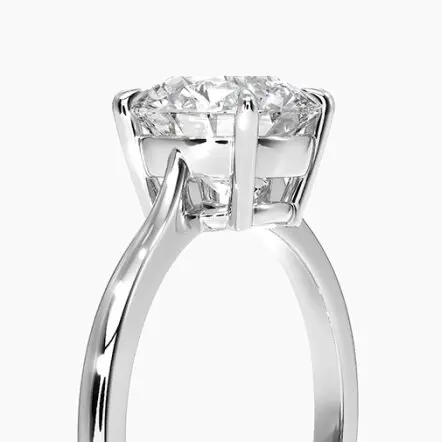
Basket
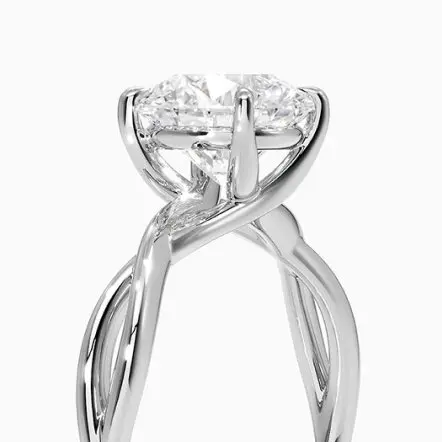
Trellis
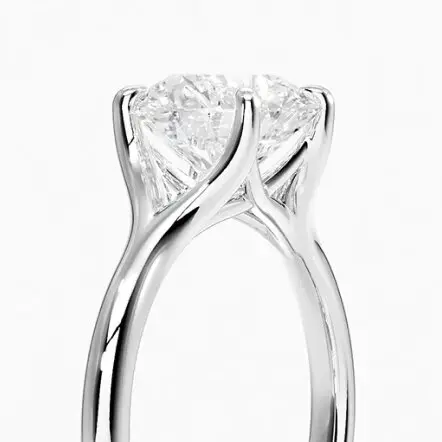
Integrated
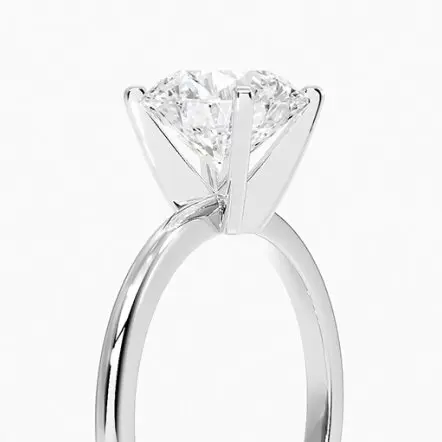
Peg
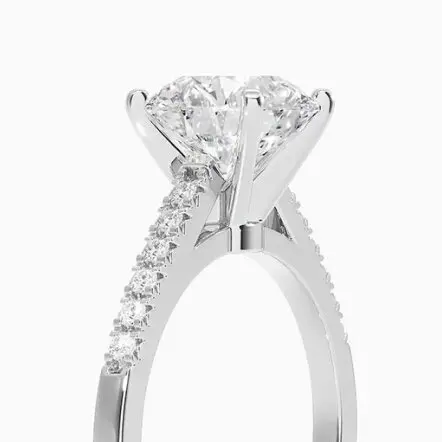
Cathedral
Accent Gemstone Setting
The accent gemstone setting refers to how other accents besides the center gemstone are set. These accents could be along the band of a ring, surprise elements that rest on the inner edge of the band, or a hidden halo underneath the head.
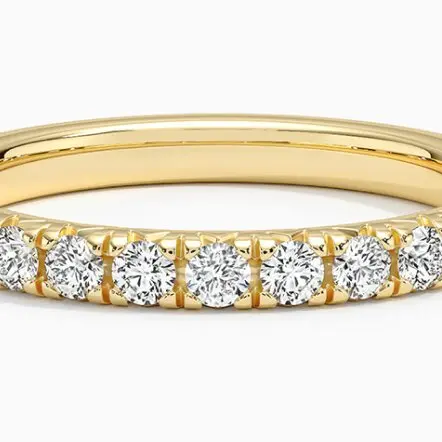
Pavé
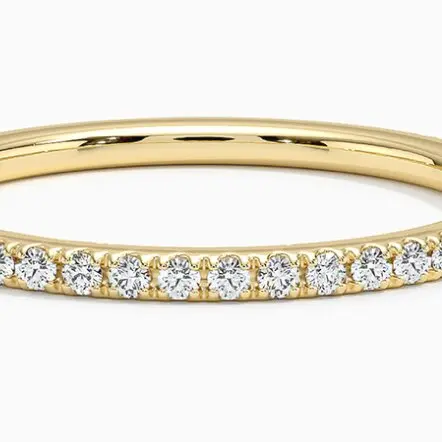
Scalloped Pavé
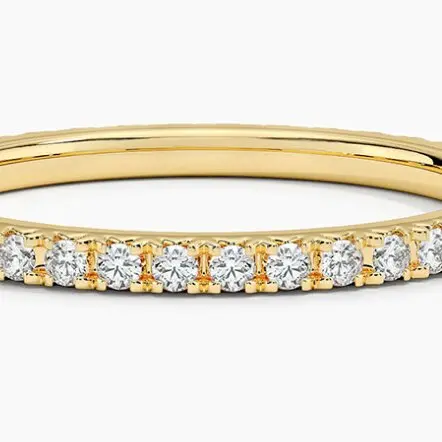
French Pavé
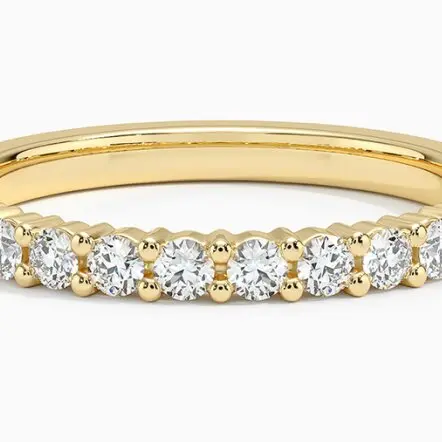
Shared Prong
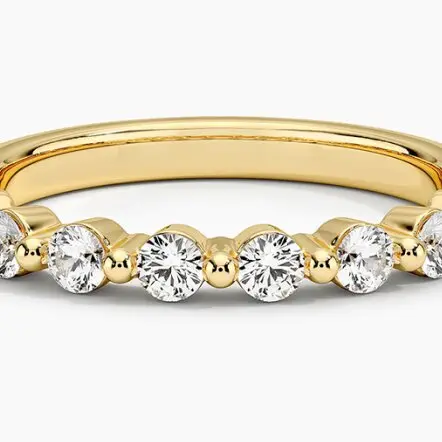
Single Shared Prong
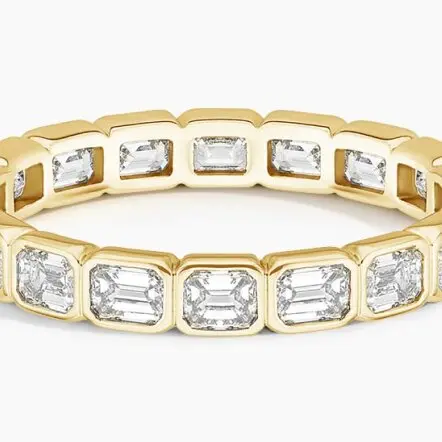
Bezel
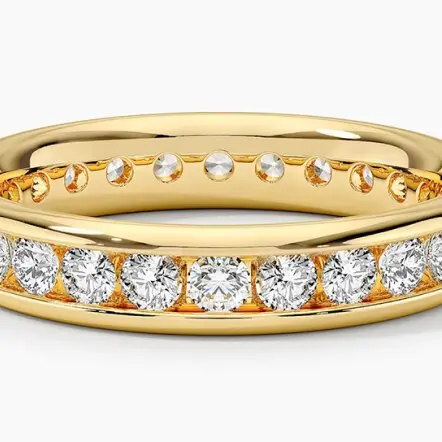
Channel
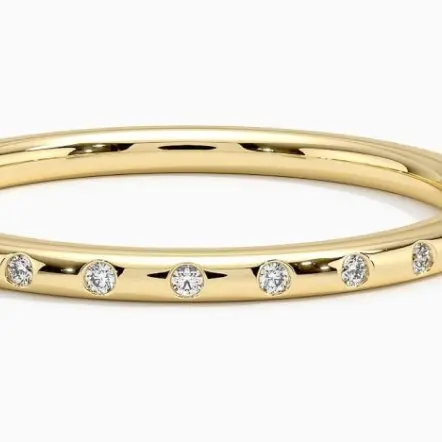
Flush
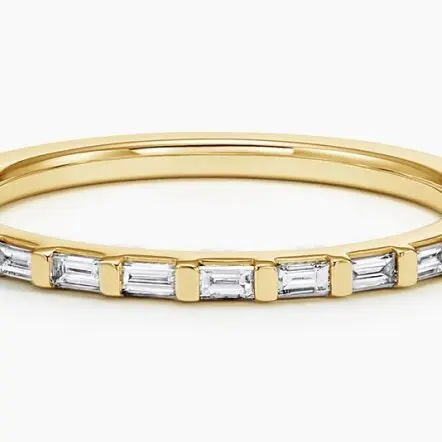
Bar
Types of Bands
The ring shank, commonly called the band, is the part of the ring that encircles the finger. It’s an important design element that affects both the appearance of the ring and how it feels to the wearer.
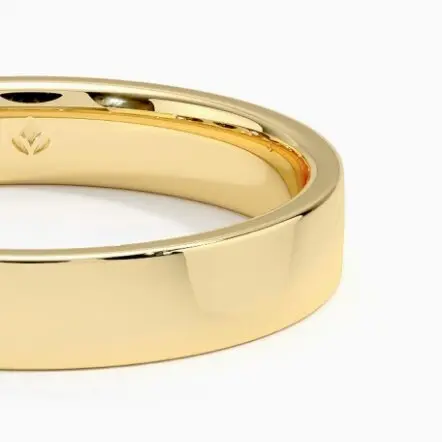
Flat
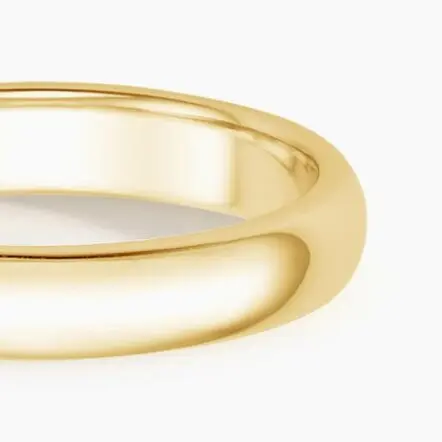
Comfort Fit
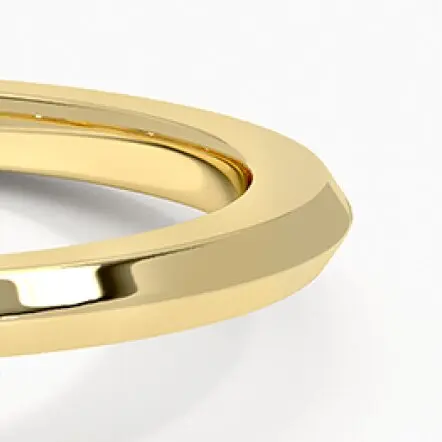
Knife Edge
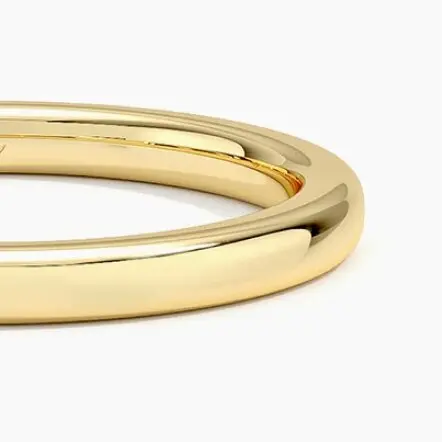
Rounded
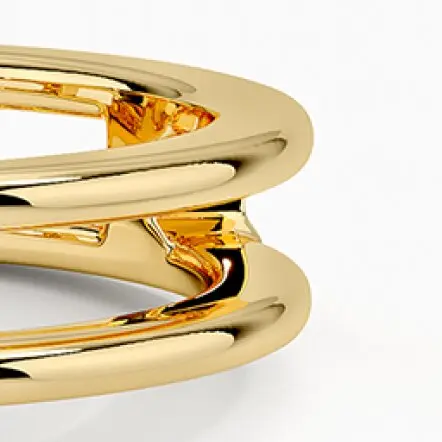
Double Band
Finishing Details
Precious metal details are a great way to add interest or embellishment to your ring. Finishing details can affect the ring’s overall appearance, giving it either a more contemporary or vintage look.

High Polish

Matte/Brushed/Satin
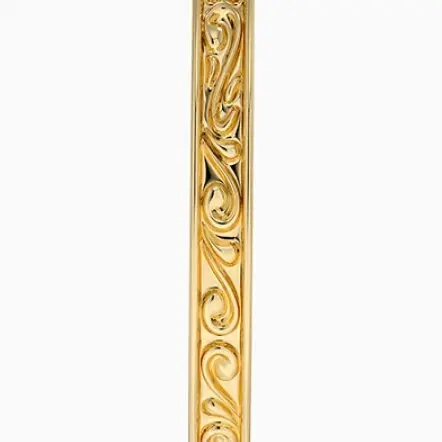
Filigree
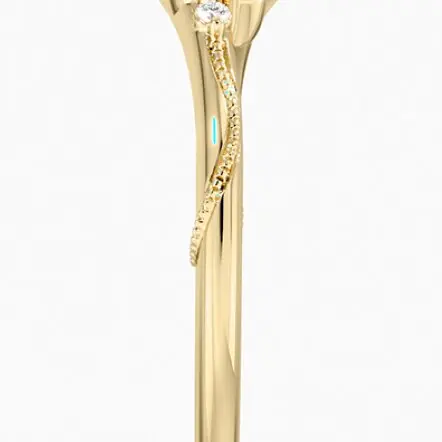
Milgrain

Hammered
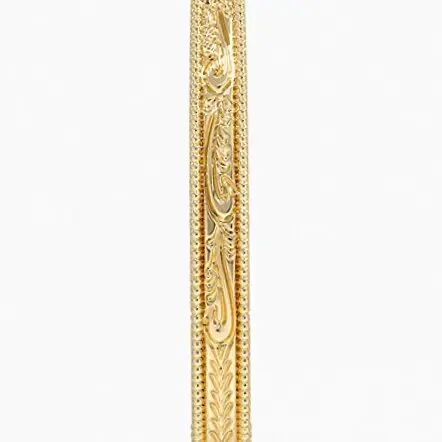
Engraved
Types Of Engagement Rings FAQs
Choosing the right engagement ring style is all about personal preference. Consider what styles you’re drawn to, whether classic or contemporary, and narrow down to the style you love the most. We suggest viewing and trying on engagement ring styles in person before making your final choice — seeing it in person can be quite different than viewing it online. If you aren’t near one of our showrooms, our cutting-edge virtual try on technology allows you to visualize any engagement ring on your finger from the comfort of home.
Solitaire engagement rings are widely considered the most traditional and most popular style.
If you’re trying to determine what engagement ring will fit your lifestyle, consider how active it is. Those who are very active (often hiking, for example) may opt for a super secure bezel-set engagement ring or a low-profile ring to avoid snagging.
It’s best to consider the overall style of your partner: are they sleeker and more sophisticated? Or do they opt for a more bold, eye-catching look? This will help inform them of the engagement ring style they’d love to wear forever.

